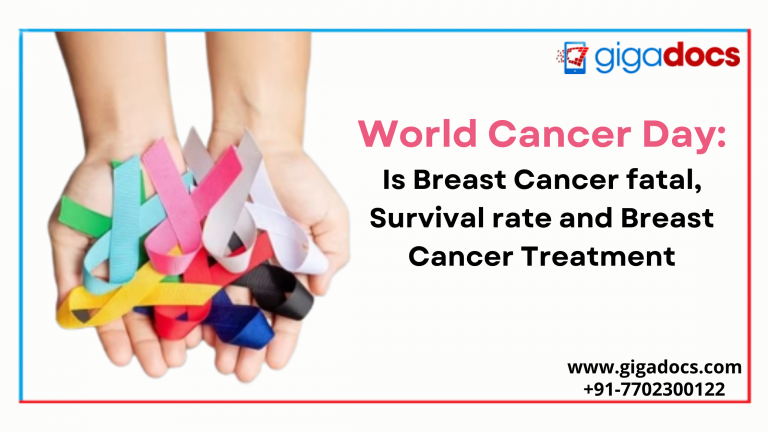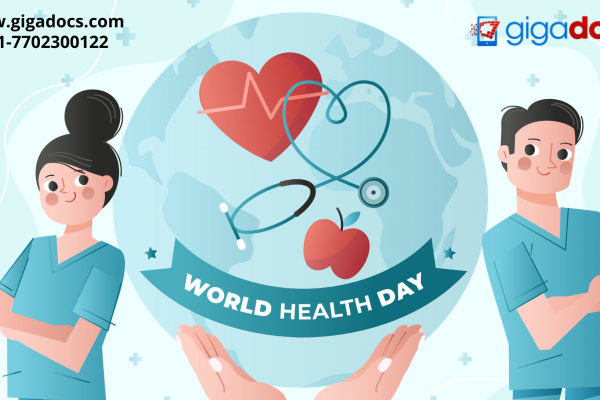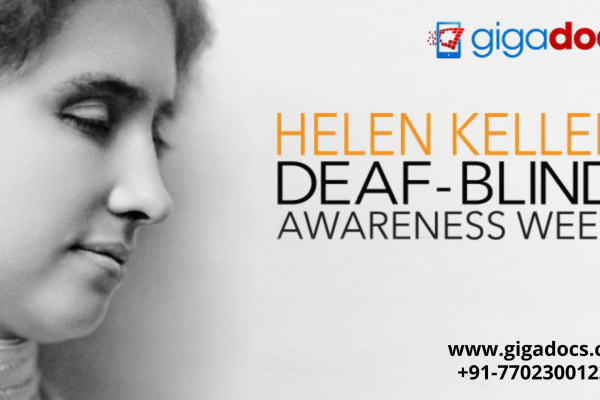We all have heard about Breast Cancer; it is the most widespread cancer in women, accounting for more than 1 in 10 new cancer diagnoses yearly. Let’s learn more about this second-leading cause of cancer-related deaths in women worldwide on World Cancer Day (4 February).
First, while men can also develop breast cancer, women are significantly more likely to do so. Credit to the tremendous investment in research and awareness initiatives, breast cancer diagnosis and treatment options have advanced. So have the breast cancer survival rates, and the number of fatalities related to the disease is steadily showing declining thanks to earlier detection, a revolutionary tailored approach to therapy, and a better understanding of the disease.
Breast Cancer: Early Diagnosis
Breast cancer can impact anyone at any age, but it is most common among people over 50. Additionally, it tops the list of cancer-related fatalities among females aged 35 to 54. Do you know the early indicators of breast cancer? Let’s read more about them in the next section-
Breast cancer warning signals (which might differ from person to person) include:
- The skin on the breast or nipple may look red, dimpled, inflamed, scaly, puckered, or puckered.
- Lump or thickening that lasts the entire menstrual cycle on the breast, next to the breast, or under the arm.
- The area around the skin may appear firm, like a marble.
- A clear or blood-colored fluid discharge from the nipple.
Some people never detect any breast cancer symptoms. Which explains why regular mammograms are needed.
Stages of Breast Cancer
The tumor’s size, location, and extent play an important role in the degree of the malicious disease. The primary phases of breast cancer are:
| Stages of Breast Cancer | Description of the Stages |
| Stage 0 | The early onset is non-invasive, which means the cancer has not broken off from the breast ducts. |
| Stage I | The surrounding breast tissue becomes infected with cancerous cells. |
| Stage II | The cancer tumor is small, it is about two cm in diameter, and has begun to spread from the lymph nodes of your arms. In some cases, the cancerous tumor has grown to five cm but has not spread to the lymph nodes. |
| Stage III | At stage III, the cancer has spread from its original location to harm the neighboring tissues. Although it might have spread to distant organs, it hasn’t yet infiltrated adjacent tissue or lymph nodes. Locally advanced breast cancer is the common term for stage III. |
| Stage IV | This stage impacts the internal and important parts of your organs namely the liver, brain, and lungs. Another name for Stage four cancer is Metastatic cancer. |
Causes of Breast Cancer
The first trigger for Breast cancer is the growth and multiplication of abnormal cells in your breast. Research is ongoing to determine the causes behind the same. However, several risk factors may raise your risk of developing breast cancer, according to a study. These consist of the following:
- Age– Having breast cancer raises your chances if you are 55 or older.
- Sex– Women have a substantially higher risk of developing breast cancer than men.
- Genetics– You have a higher chance of developing breast cancer at some time in your life if you have parents, siblings, children, or other close relatives diagnosed with the disease. Genetic testing reveals that 5% to 10% of breast cancers are caused by a single faulty gene handed down from parents to children.
- Obesity– Obesity and lack of exercise can raise your risk of developing breast cancer and its recurrence if it has been cured.
- Alcohol– According to research, alcohol may make you more likely to develop several types of breast cancer.
- Radiation therapy– You are more likely to get breast cancer if you have previously undergone radiation therapy, particularly to the head, neck, or chest.
- Smoking– Several types of cancer, including breast cancer, have been related to smoking and tobacco use.
Warning Signs of Breast Cancer?
Distinct people will experience different breast cancer symptoms. Some people may lack entirely any signs or warning indications-
Some indicators of breast cancer include—
- Any change to the breast’s size.
- Swelling or thickening of a breast region.
- Breast skin irritation or dimples.
- Nipple pulling in or discomfort in the nipple region.
- Bleeding from the breasts.
Diagnosis for Breast Cancer
While one cannot prevent breast cancer, you can take several steps to lessen your chance of finding it when it is well advanced. For instance:
- Get regular mammograms– After age 40, we advise yearly mammography screening. A baseline mammogram is advised at age 35. After 20, you should check your breasts every month because you’ll get used to their feel and shape and be more aware of changes.
Having your breasts evaluated by a medical professional is advised every year beyond 40. Lumps can be discovered during clinical breast exams that mammograms can miss.
Is Breast Cancer Fatal?
Early breast cancer patients frequently experience advantageous treatment outcomes. In actuality, many people with a breast cancer diagnosis lead long, successful lives. But late-stage breast cancer can be severe and is more challenging to treat.
Survival Rate for Breast Cancer
90% of breast cancer patients survive the disease after five years. In other words, 90% of those diagnosed with the condition are still living five years later. While metastatic breast cancer has a 28% five-year survival rate, localized breast cancer has an 86% five-year survival rate. Fortunately, as we gain more knowledge about the illness and create new, more effective research methods, the survival rates for breast cancer are rising.
Breast Cancer Treatment
Surgery, chemotherapy, radiation therapy, hormone therapy, immunotherapy, and targeted medication therapy are a few breast cancer treatments available. The position and size of the tumor, the outcomes of lab tests, and if cancer has spread to other regions of your body are just a few of the variables that will determine the more suited treatment for a person. To know more and schedule a screening test book us a consultation at-
- IOS App – apple.co/2W2iG4V
- Android App – bit.ly/33AQoRC
To know more e-mail, at info@gigadocs.com




